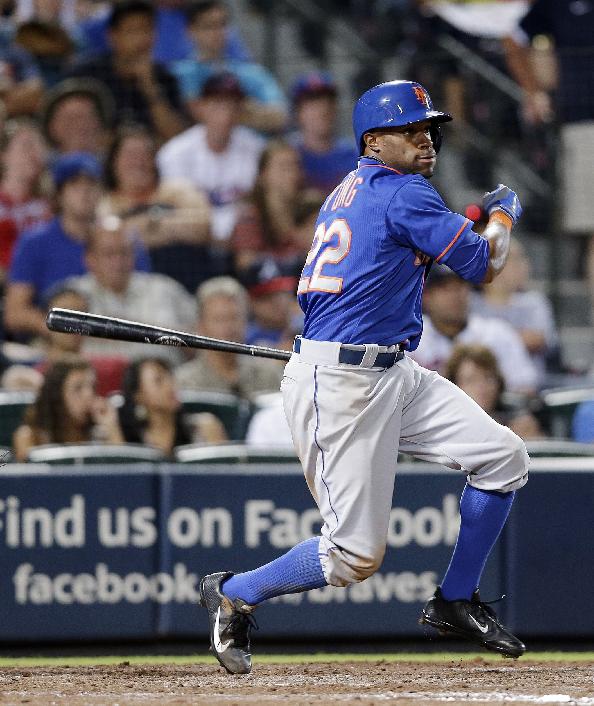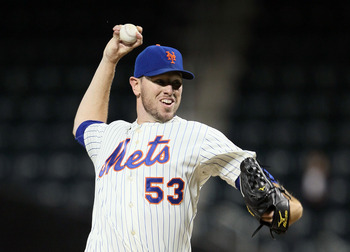 Marlon Byrd has been the biggest surprise for the Mets this season. After signing a minor league deal with the Mets over the winter, fans did not have high expectations for the 35 year old outfielder. Byrd was coming off a season where he hit a combined .210 in 47 games with the Cubs and Red Sox, and also served a 50 game PED suspension. Byrd, an All-Star with the Cubs in 2010, knew that he'd have every opportunity to rebound his career in New York since their outfield depth was extremely thin.
Marlon Byrd has been the biggest surprise for the Mets this season. After signing a minor league deal with the Mets over the winter, fans did not have high expectations for the 35 year old outfielder. Byrd was coming off a season where he hit a combined .210 in 47 games with the Cubs and Red Sox, and also served a 50 game PED suspension. Byrd, an All-Star with the Cubs in 2010, knew that he'd have every opportunity to rebound his career in New York since their outfield depth was extremely thin.
Coming out of spring training, Terry Collins strongly supported Marlon Byrd, and promised him every-day playing time out in right field. That move questioned many Mets fans, as they thought the team was looking to get younger. Byrd, as many of you now know, has had an excellent 2013 season, and has been one of the better hitters in the team's lineup. He's currently hitting .263 with an impressive 15 home runs and 49 RBI in 77 games.
Since the Mets are out of contention, it is likely that they'll sell off some of their pieces later this month. It makes too much sense to trade Marlon Byrd, as he has an expiring contract, and would likely not re-sign with the Mets in the off-season. Despite that, Mets special assistant J.P. Ricciardi recently told Jim Duquette on SiriusXM Radio that Marlon Byrd's trade value will be very high, and moving him isn't a sure thing.
"It would have to be something serious for us to move him," Ricciardi told Duquette.
In my mind, it would be idiotic to not move Marlon Byrd. At 35 years old, he is clearly not part of the future, even as a bench player, and it is unlikely that he'll even put up numbers like this again. After a season like this, it is also worth mentioning that Byrd will likely command a multi-year deal in free agency, and that is something the Mets may not be willing to hand out.
Perhaps Ricciardi is saying this because he wants to drive the price up for Byrd, since he knows that there are teams out there that are desperate for outfield depth. Personally, as long as the Mets get a semi-decent prospect for Byrd, I'm fine with letting him go.
I really hope that they are not keeping Byrd to "remain competitive." The reality is, the Mets are a 75 win team at best, and letting Byrd go would not matter at all. Just move him, give the playing time to younger guys, and hopefully get a decent player for him.
Like I said before, the outfield market will be competitive this month, and Marlon Byrd will -- eventually -- be highly coveted by other teams. One team I can see getting involved are the Rangers. Texas currently has Nelson Cruz in right field, but after the dust settles on this Biogenesis situation, Cruz could find himself suspended, and Texas could overpay for an outfielder.
Another team I could see looking at Byrd are the Tampa Bay Rays. The Rays' offense has always been a weakness, and they could certainly use someone like Marlon Byrd to give them outfield depth.
All things considered, Marlon Byrd will likely be dealt at this month's trading deadline. The front office can say whatever they want, but it makes too much sense to trade him. Byrd is no young, up and coming outfielder. He is a 35 turning 36 year old outfielder who is currently playing way over his head. Ship him off while his value is high.








